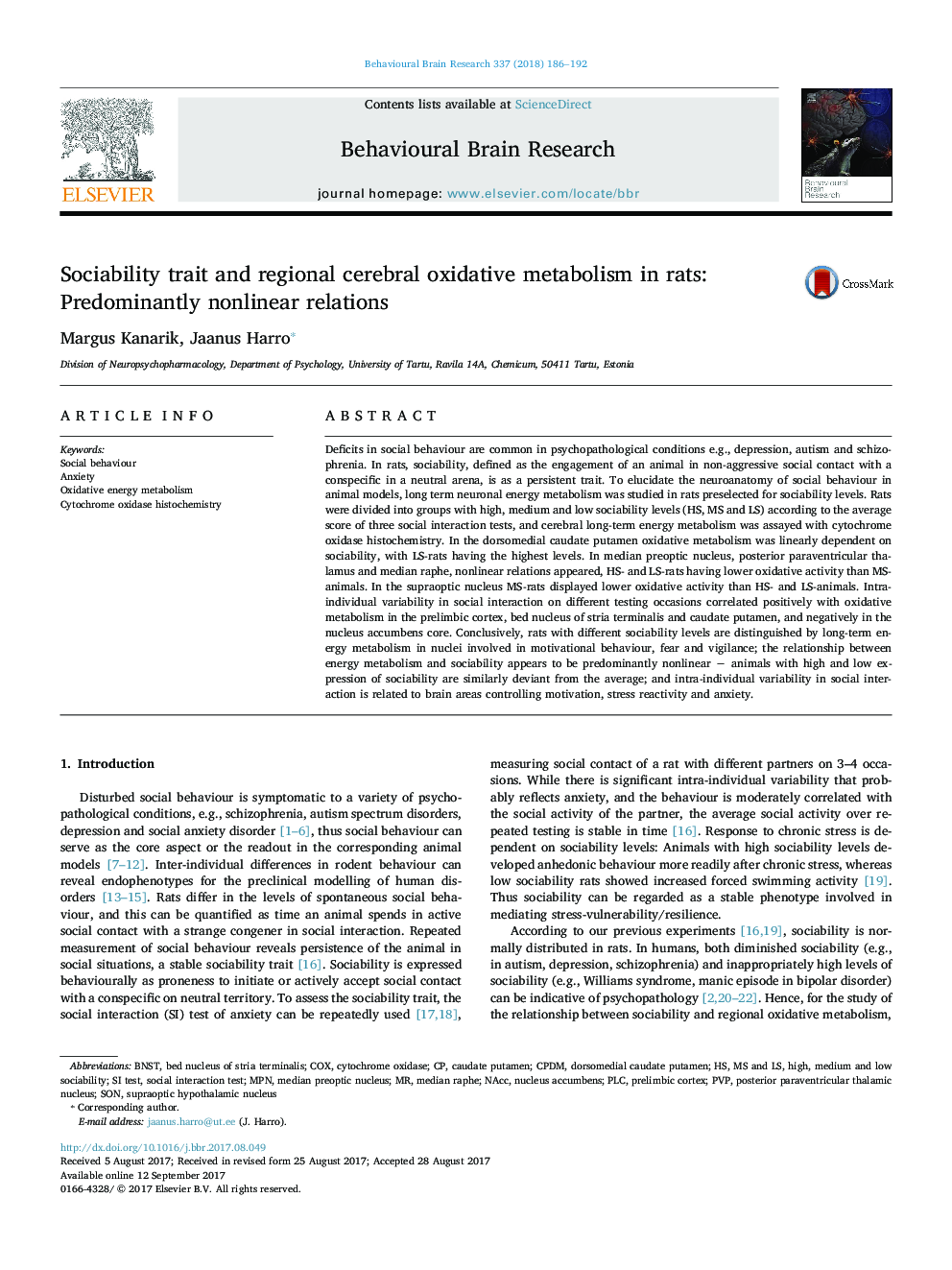| کد مقاله | کد نشریه | سال انتشار | مقاله انگلیسی | نسخه تمام متن |
|---|---|---|---|---|
| 5735267 | 1612898 | 2018 | 7 صفحه PDF | دانلود رایگان |
- Social behaviour of rats, while not independent of the partner, is trait-like.
- Mapping oxidative metabolism revealed the brain regions implicated in sociability.
- The sociability regions are involved in motivation, stress, fear and vigilance.
- Sociability relates with brain long-term energy metabolism mainly non-linearly.
Deficits in social behaviour are common in psychopathological conditions e.g., depression, autism and schizophrenia. In rats, sociability, defined as the engagement of an animal in non-aggressive social contact with a conspecific in a neutral arena, is as a persistent trait. To elucidate the neuroanatomy of social behaviour in animal models, long term neuronal energy metabolism was studied in rats preselected for sociability levels. Rats were divided into groups with high, medium and low sociability levels (HS, MS and LS) according to the average score of three social interaction tests, and cerebral long-term energy metabolism was assayed with cytochrome oxidase histochemistry. In the dorsomedial caudate putamen oxidative metabolism was linearly dependent on sociability, with LS-rats having the highest levels. In median preoptic nucleus, posterior paraventricular thalamus and median raphe, nonlinear relations appeared, HS- and LS-rats having lower oxidative activity than MS-animals. In the supraoptic nucleus MS-rats displayed lower oxidative activity than HS- and LS-animals. Intra-individual variability in social interaction on different testing occasions correlated positively with oxidative metabolism in the prelimbic cortex, bed nucleus of stria terminalis and caudate putamen, and negatively in the nucleus accumbens core. Conclusively, rats with different sociability levels are distinguished by long-term energy metabolism in nuclei involved in motivational behaviour, fear and vigilance; the relationship between energy metabolism and sociability appears to be predominantly nonlinear â animals with high and low expression of sociability are similarly deviant from the average; and intra-individual variability in social interaction is related to brain areas controlling motivation, stress reactivity and anxiety.
Journal: Behavioural Brain Research - Volume 337, 30 January 2018, Pages 186-192
